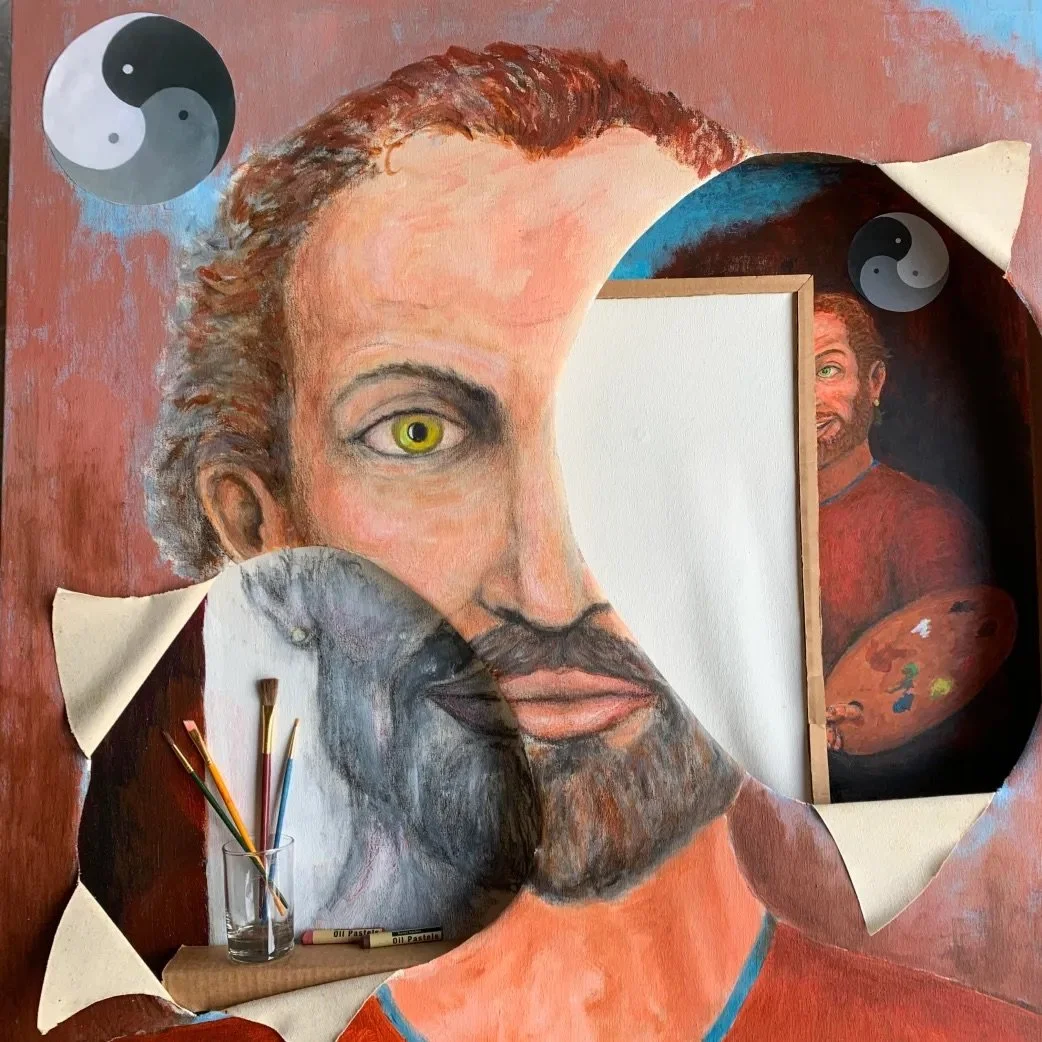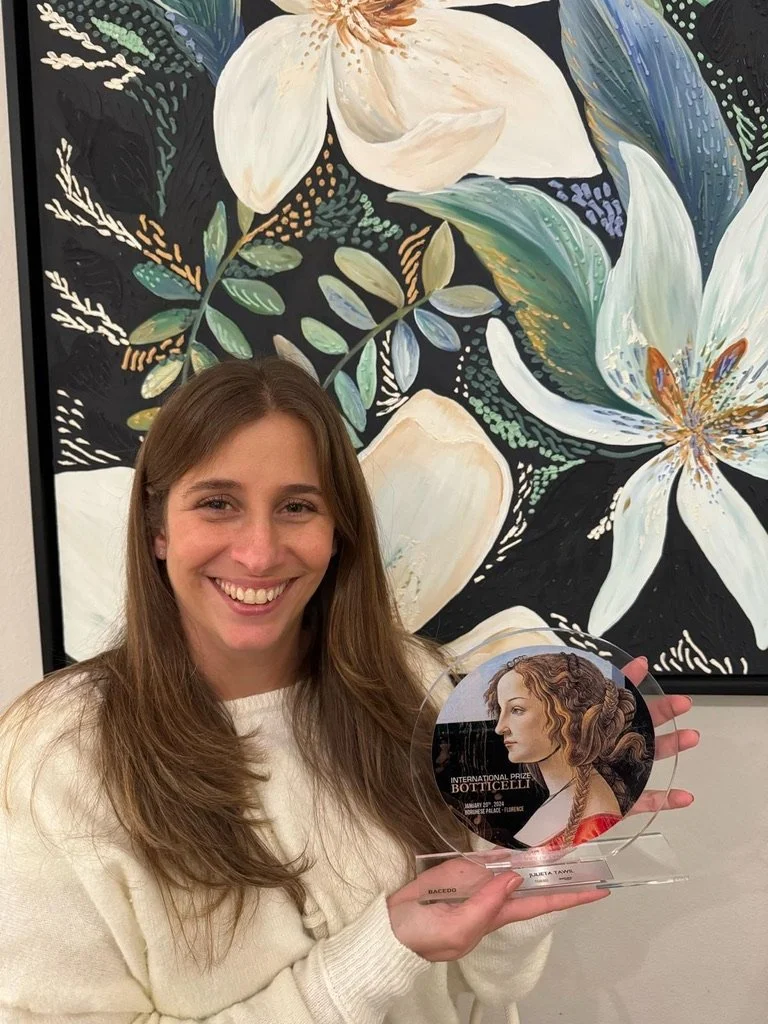I am an American painter and for Americans there is a short artistic history. We are a melting pot and as such I take the liberty to borrow—or even steal—from everyone and everywhere. I feel lucky to have found the things I need for my expressive endeavors. James Joyce speaks of walking on the beach and his foot striking the rock he needs. I think of these elements as such.
All in Interview
Interview with Celik Kayalar
Celik was born in 1949. He was a Fulbright Scholar at UCLA, receiving his Ph.D in Biochemistry in 1977. He has been a Research Associate and Faculty at various Universities such as MIT, UC Berkeley, and UCLA in chemistry, biochemistry, and molecular biology. His Ph.D thesis is credited for earning his mentor, Prof. Paul Boyer, the Nobel Prize in Chemistry in 1997.
Interview with Silke Wolff
Silke Wolff, *1965, lives and works as an artist in Ludwigshafen, Germany. At an early age, she had her own desk where she drew and painted gestural abstracts in four media. After high school, she studied drawing and design at four high-ranking international universities. This was followed by 14 years of international freelancing in product design. During this time, Silke Wolff traveled up to half a year to the USA, Yemen, Egypt, Thailand, China, and India, where she discovered new cultural worlds.
Interview with Miranda Hampson
I am an Anaiwan woman (Uralla, NSW). I was born and raised on Gumbaynggirr Country and currently living on Dharawal Country. My family has a great affinity with the ocean and it is at the heart of my most cherished childhood memories. My grandmothers, both artists, in watercolours and oils, opened me up to the art world from a young age. I hold a Bachelor of Arts (Photography) and BA Applied Science (Parks, Recreation and Heritage) with First Class Honours.
Interview with Tamara Andjus
My creative process begins with conceptualization, often inspired by a specific emotion, memory, or observation. I never do sketches. I try to visualize the image on a canvas before I start painting by imagining the energy and movement I want to capture. This initial phase is crucial.
Interview with Brenda Hartill
I have always been an experimenter and to be honest I can’t work without trying to break new ground. The purist printmakers see me as a bit of a rogue and I break the rules all the time. However, strangely, I have re-printed some of my coloured early works in black and white, which I now prefer! My biggest print, Sheets, an image gathered on holiday in Corfu, of crisp white sheets drying in in an olive grove, was reprinted in black and white recently.
Interview with Selma Karlsdottir
Born in Reykjavik, Iceland, and raised in Sweden and Germany, Selma Karlsdottir is a versatile artist with a formal background in theatre tailoring, metal craft making, jewellery design, painting (acrylic, aquarelle, and oil), photography, web design, and art history. She holds a degree (cum laude) in Interior Design from Istituto Marangoni and has lived in seven different European countries in Europe, influencing her diverse and captivating works.
Interview with Amanda Wall
As a critic and as a studio assistant, your focus is on established artists and their work. You have to shift gears from your own practice to how the process of production works on a large scale and understanding their voice. You have to quiet your own voice so you can listen to them. I have learned so much concentrating so intently on other artists. I really admire Jan (Huttner from FF2), Carole and Michael. You have to be an entrepreneur and a high profile artist or writer. It's a huge responsibility. I think often about how I would operate my practice at that level of success.
Interview with Kenan K. (Koçak)
When I started painting as a hobby in my fifties, it was as if the soul of a twelve-year-old boy had come out of the shelter where he had been staying for years. We decided to walk on the path of art together, hand in hand if possible. I realised that art allows me to touch the lives of people, - if they let me-, who I have never met or who do not know me. This is a profound, unique and inspiring feeling for me.
Interview with Malina Wieczorek
Malina Wieczorek studied at the Academy of Fine Arts in Cracow, graduating in 1996 with honors. Diploma in the Interior Design Studio with prof. Barbara Borkowska-Larysz, annex in Graphic Design with prof. Jacek Siwczynski. Painting in the studio of prof. Janusz Tarabula. She has been exhibiting since 1994. Her works are on permanent display in prestigious corporate and private collections around the world.
Interview with Ernest Compta
Music is important in my creative process because it helps me to stop thinking. I forget everything and start painting. In this way, reason or self-criticism stop bothering me and I can concentrate only on what the painting asks of me. I don't listen only to a certain style of music or a particular artist. I like jazz and electronic music. Painting with music accompanies me and makes the creative process less solitary.
Interview with Carole Wu
I was fortunate to grow up in an era with readily accessible online resources and tutorials, surrounded by talented individuals. My nearly ten-year career as a visual effects artist offered opportunities to work with amazing people in different countries, but it was also demanding and skill-focused. Deep down, I yearned to create my own work and enjoy the process of painting and self-expression. The lockdown provided an opportunity for reflection on my career path and what I truly wanted to pursue without regrets. Additionally, this marked an exciting new adventure to share my work with others and build connections.
Interview with Matthew Morpheus
Serhii Matveichenko, also known as Matthew Morpheus, is a visual artist born in Ukraine. During his career he received several international awards (including Beijing, Moscow and New York). Matthew Morpheus is known for his unique style, in which he combines graphics, collage and specific types of aerosol paints. It is important to note, that his art works fully convey the atmosphere of the New Age concept of the 21st century with unique cultural diversity and unusual genres and ideas.
Interview with Carolanne MacLean
I feel myself change as I look at an object of beauty. It has calmed me from childhood, the blue shadows on the snow, and the sparkling raindrops on leaves. The late great Canadian encaustic painter, Tony Scherman, said that you know it’s beauty because there’s pain in it. This is my experience also. Sometimes, you can’t look away. My only explanation is that it is something divine.
Interview with Nora Komoroczki
Nora is a Hungarian artist-painter with the artist name Mano. She was born in Hungary and is still living in the Hungarian capital, Budapest. She’s been painting with oil on canvas for more than three decades, inspired first by the beautiful landscapes in Hungary and other countries where she has been living with her family for a few years (Sweden, Israel, Belgium).
Interview with Sonia Indelicato Roseval
Montreal artist Sonia Indelicato Roseval was born in Tunis, Tunisia in 1955. Inspired by and passionate about the architecture of Old Montreal, Roseval took on her first exhibit in the 1980's. It was at this exhibit that she met her future mentor and internationally renowned artist Francois Lortie.
Interview with Marco Riha
Originally from Austria, Marco Riha started his long creative journey in Sri Lanka in the mid-nineties. After painting and traveling for some years, he found his creative home base in Mexico. André Breton describes Surrealism as ‘psychic automatism in its pure state.’ For decades Riha has been experimenting with this automatic painting technique, unaware of being a modern-day Surrealist.
Interview with Christopher König
Christopher, Tim König holds a Bachelor of Arts degree in "Culture and media education with art and music as a specialization". In the meantime he has taken part in international exhibitions and sold his paintings to private collectors. His art moves between abstraction with strong color volumes, performing arts and drawings with ink. His ideas result from consistently listening to the music as well as from his everyday experiences.
Interview with Christel Petraud
Christel Delrieu Pétraud (CDP), born in 1976 in Toulouse, France, is an internationally famous artist, known for her innovative painting and artistic explorations combining mathematical logic and letting-go. She obtained her baccalauréat in Arts and Letters in 1995, then went on to study visual arts and art history, obtaining a double degree in 1998. In 1999, she obtained a Master's degree in Visual Arts, specialising in colour. The following year, she graduated from the IUFM to become an art teacher, but ultimately did not integrate national education.
Interview with Julieta Tawil
Julieta, can you take us back to the beginning of your art journey? What sparked your initial interest in art, and how did you decide to pursue it as a career?
My journey into art began at a very young age, deeply influenced by my surroundings and my mother, who was an exceptional artist. Watching her create and express herself through various mediums sparked my initial interest in art. The decision to pursue it as a career came naturally as I found immense joy and fulfillment in creating art. Over time, I realized that this was my true calling, a path where I could merge my passion with my professional aspirations.




















